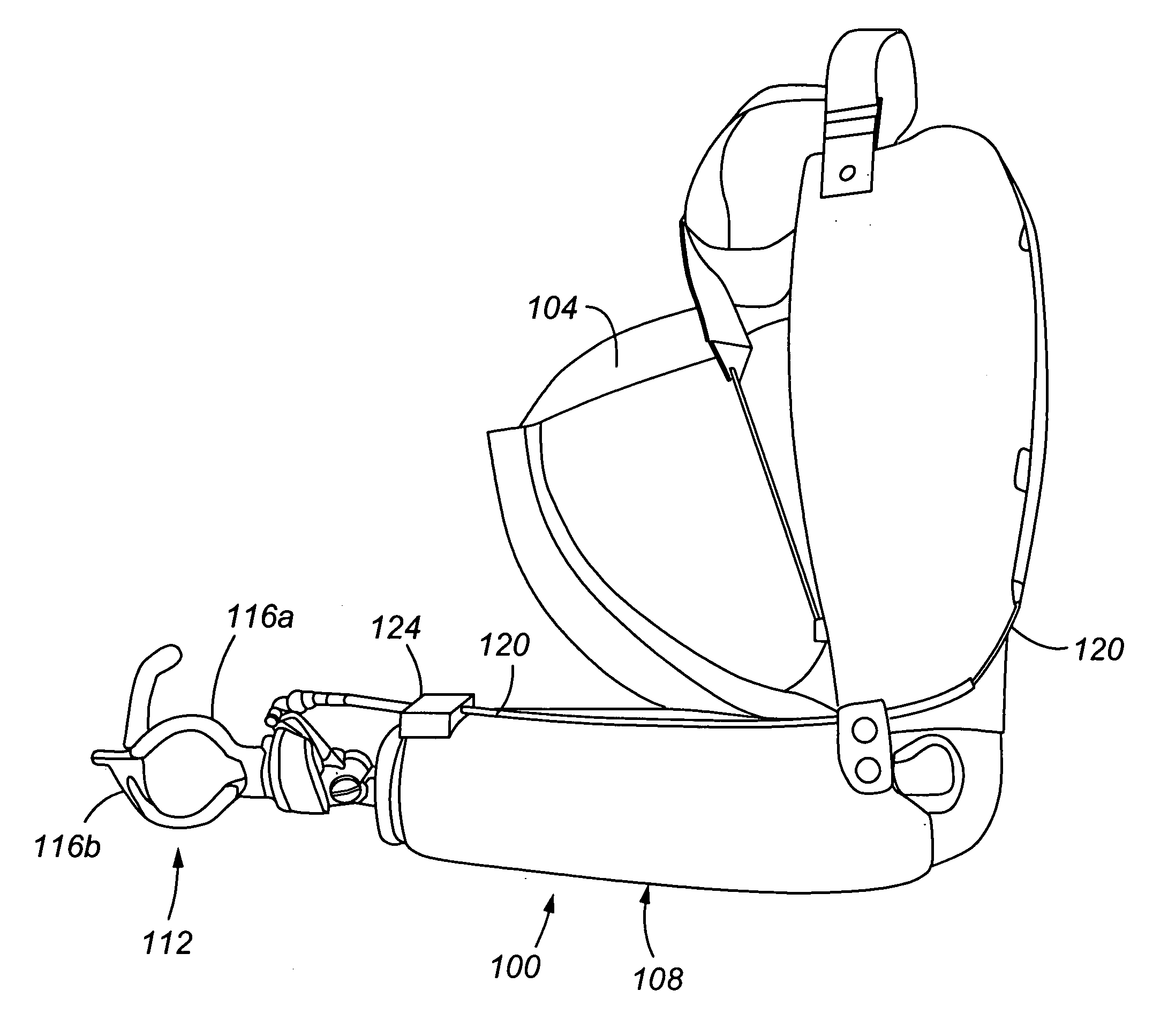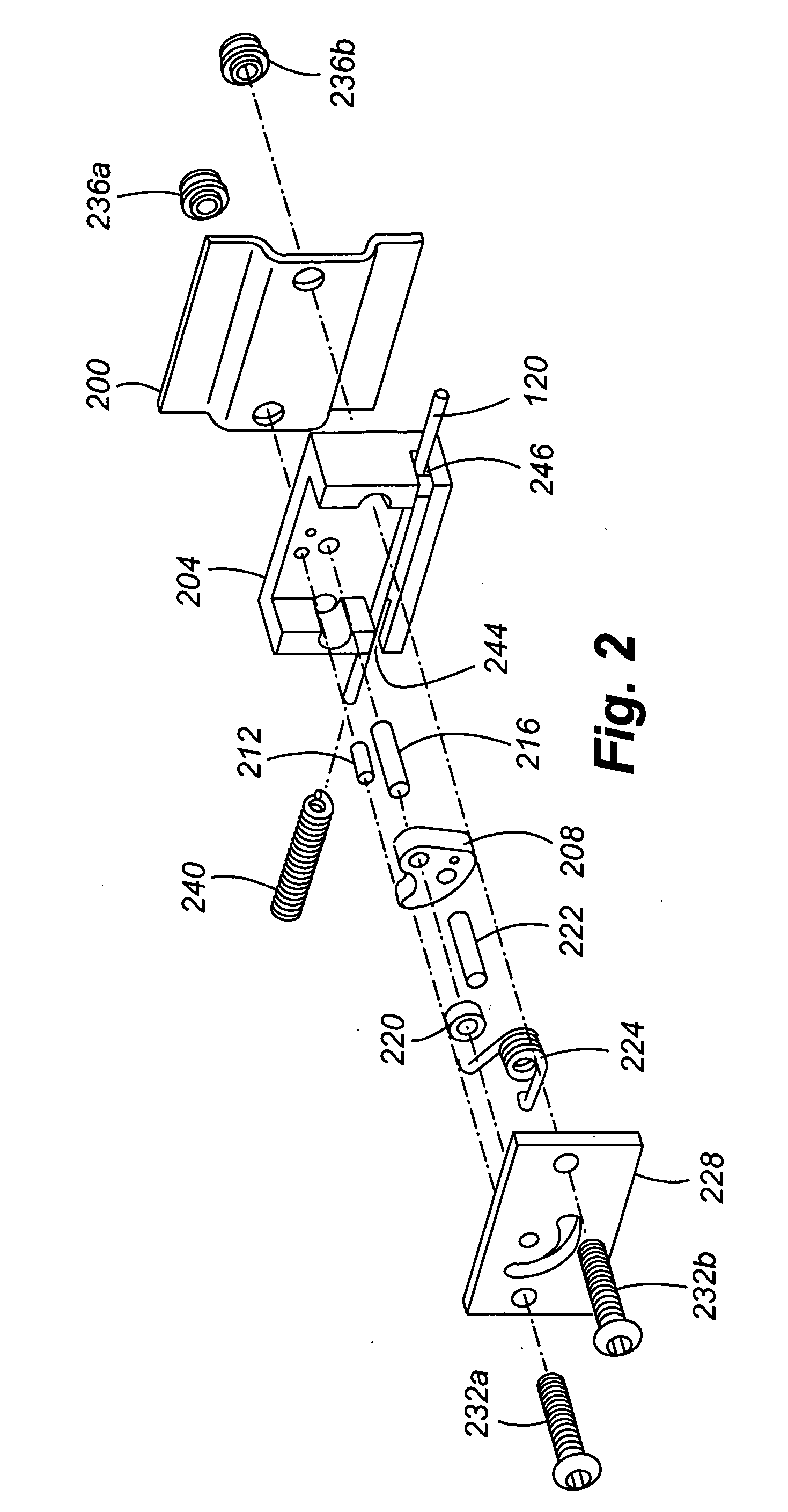Cable lock device for prosthetic and orthotic devices
- Summary
- Abstract
- Description
- Claims
- Application Information
AI Technical Summary
Benefits of technology
Problems solved by technology
Method used
Image
Examples
first embodiment
[0038] cable lock device 124 will be discussed with reference to FIGS. 2-5. The cable lock device 124 includes a mounting plate 200, a body 204 engaging the Bowden cable 120, a friction shoe 208 for locking the Bowden cable 120 in a desired position, a movement limiter 212 to limit rotational movement of the shoe, a kingpin 216 about which the shoe rotates, a restraining member 220 to engage the kingpin 216 and hold the shoe in position on the kingpin 216, an actuation lever 222 to permit the user to lock and unlock the shoe against and from, respectively, the cable 120, an over-the-center toggle spring member 224 to bias the shoe against the cable 120, a cover plate 228, and fastening screws 232a,b that engage nuts 236a-b and hold the cover plate 228 on the body 204. The spring member 240 engages the cable inlet cable guide 244 of the body 204. The body 204 further includes a cable outlet guide 246.
[0039]FIG. 3 shows the shoe 208 in a locked position against the cable 120. As can b...
second embodiment
[0047] A hybrid or electromechanical cable lock device of the second embodiment will now be discussed with reference to FIGS. 6-9. As shown in FIGS. 6 and 7, the cable lock device 600 includes a toggle arm lever 604 and shoe 608 pivotably or rotatably mounted about the kingpin 612, the over-the-center spring member 224, the movement limiter 212, the body 616 having an inlet cable guide 620 and outlet guide 624 for the cable 120, and first and second biasing coils, or electromagnets, 628 and 632 for displacing the toggle arm lever 604 between first and second (bi-stable) positions 800 and 804 (FIG. 8). The toggle arm lever 604 includes a magnetic member 700 (FIG. 7) passing through the toggle arm lever 604, such that oppositely polarized faces of the magnet are exposed on each of the first and second sides 704 and 708 of the lever 604. In the absence of the spring member 224, the lever 604 and shoe 608 are rotate independently about the kingpin 612. The spring member 224, however, bi...
PUM
 Login to View More
Login to View More Abstract
Description
Claims
Application Information
 Login to View More
Login to View More - R&D
- Intellectual Property
- Life Sciences
- Materials
- Tech Scout
- Unparalleled Data Quality
- Higher Quality Content
- 60% Fewer Hallucinations
Browse by: Latest US Patents, China's latest patents, Technical Efficacy Thesaurus, Application Domain, Technology Topic, Popular Technical Reports.
© 2025 PatSnap. All rights reserved.Legal|Privacy policy|Modern Slavery Act Transparency Statement|Sitemap|About US| Contact US: help@patsnap.com



